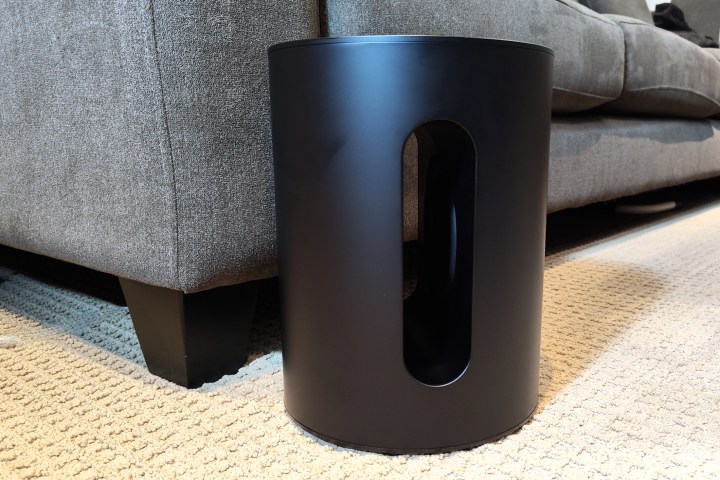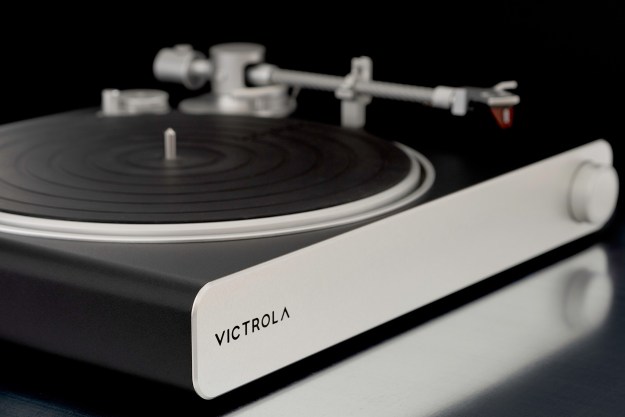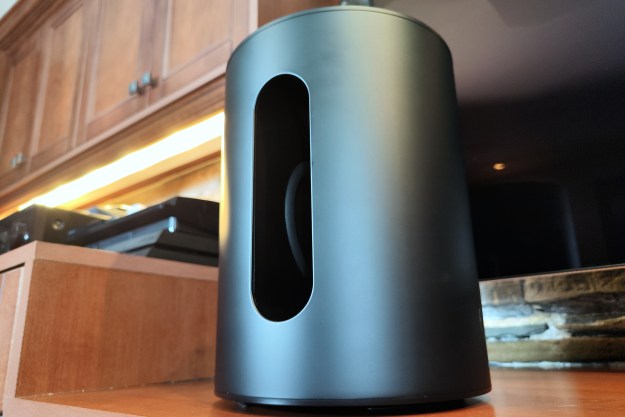
“Clear, powerful, and versatile low-end bass is now within reach for more Sonos buyers with the arrival of the Sub Mini.”
- Elegant design
- Super-simple setup
- Highly versatile
- Satisfying low-end bass
- Still relatively expensive
- Won't rock your sofa
Sonos finally has a subwoofer that doesn’t cost as much as its flagship soundbar, and the world is a better place because of it. Well, a better place for Sonos fans at least, who now have the option of buying the $429 Sonos Sub Mini, a wireless subwoofer that can be paired with almost any Sonos speaker or component.
Frankly, it shouldn’t have taken Sonos a decade (the first-gen Sonos Sub debuted in 2012) to take this step. But now that it’s here, the Sub Mini gets a lot of points just for existing.
A smaller sub
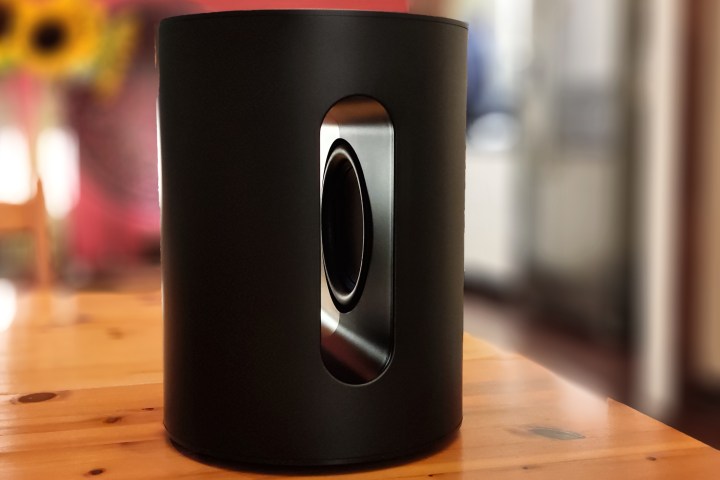
Design-wise, this is exactly what I’ve come to expect from Sonos. It’s simple and elegant and available in your choice of matte black or matte white, just like the rest of the company’s latest wireless speakers and soundbars — but very different from the gloss-white or piano-black finish on the Sonos Sub.
No, this sub doesn’t seek the spotlight like its larger sibling. Its cylindrical shape is short enough and narrow enough to blend into any room. By using the same dual, horizontally opposed driver design as the Sonos Sub, the Mini’s body exhibits very little in the way of vibrations, even when pumping out copious amounts of low-end frequencies. So yes, go ahead and put a vase or some other decor item on top — the perfectly flat surface practically begs to be used as a stand.
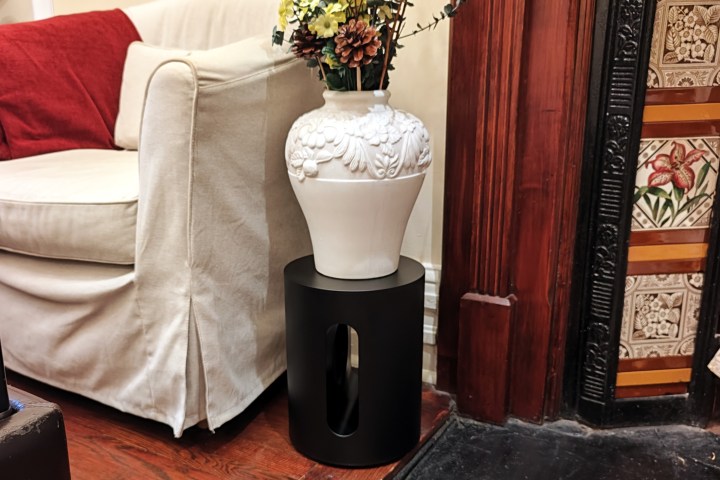
The central slot gives the Mini some great visual interest, should you want to call attention to the speaker, but it will work just as well regardless of which way you orient it. So if you think the slot might prove too great of a temptation for the small hands in your household, feel free to make it a little less accessible (though try to avoid sticking the Mini deep in a corner as this might affect the sound).
The low-end produced by this compact speaker is still plenty powerful.
The Mini’s size also is the key to its greatest strength (other than price): It’s incredibly versatile. There’s versatility of placement, to be sure, but also versatility of sound. The original Sub is a truck — a heavy and high-powered speaker capable of powering larger home theater setups centered around the Sonos Arc or the older Playbar. The Mini is more like a hatchback — the perfect complement to a variety of setups including smaller soundbars like the Beam and the Ray, but also the growing number of smaller speakers like the One, One SL, and the Ikea-branded Symfonisk Bookshelf, Table Lamp, and Picture Frame speakers.
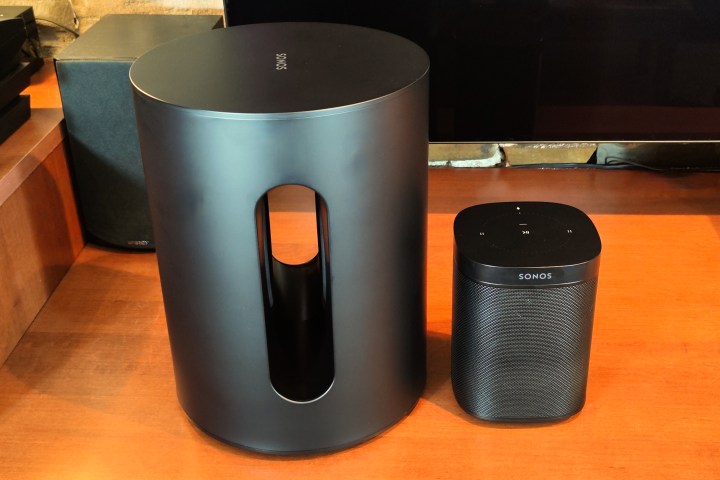
If you have multiple rooms with Sonos speakers, you can even move the Mini from room to room effortlessly. Just go into the Sonos app, pick your room, and choose the Connect Sub option. Within a minute or two, you’re good to go. The only catch? It can’t be paired with either of Sonos’ portable speakers, the Move or the Roam.
Stirred, not shaken
So how does it sound? Pretty fantastic, considering its size.
Keep in mind, it’s not going to rattle your windows or shake your sofa, but the low-end produced by this compact speaker is still plenty powerful. In a small-to-medium-sized room, it can give your favorite Hollywood blockbusters the kind of visceral punch they’ve been missing if you’ve been relying on just a Sonos soundbar.
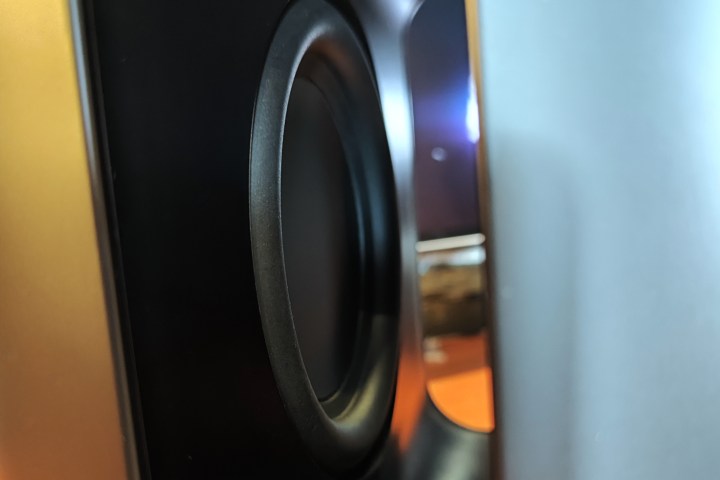
Tron: Legacy might not have won many accolades for its storyline, but the soundtrack is an absolute bass-fest, filled with constant low-frequency sound effects and music. Without a subwoofer, even the Sonos Arc fails to give you the full experience, but add the Sub Mini and you’re suddenly right there in the midst of the movie’s light cycles and disc tournaments.
Action movies and shows always do better with more low-end, but even less dynamic fare — shows such as Better Call Saul or Fargo — can benefit from the grounding a sub like the Mini can provide.
I’ve always been mightily impressed with how much bass the tiny Sonos Play:1/One/One SL can produce, and never really felt the need for a subwoofer while listening to them. But drop the Sub Mini in, whether you’ve got a single speaker in mono mode or a stereo pair, and you will notice the extra presence it gives your tunes, whether your tastes veer toward classical or hip-hop.
Turn it on, tune it in
But here’s a pro tip: Even though Sonos makes it laughably easy to add the Sub Mini to your system, you’ll want to make some adjustments to make sure you’re getting the most from this speaker. Subwoofers are fantastic add-ons, but they can also create some unpleasant sounds if they’re not managed well.
For most Sonos owners, the Sub Mini is going to be the hands down best choice.
First up, after you add the Sub Mini to a room, be sure to use the Sonos Trueplay feature. It automatically balances the Mini and your existing speakers for your room’s acoustics. That may sound like a “well, whatever” statement, but trust me, it will sound way better once you do it. Unfortunately, Trueplay is still an iPhone-only feature. So if you’re an Android user, you can either borrow an iPhone from a friend (Trueplay settings stay with your system once they’re applied) or you’ll need to play with both the position of the Sub Mini and the phase controls in the Sonos app to find a sound you like.
Second, you’ll want to take advantage of the separate EQ and subwoofer level adjustments. Think of it this way: the subwoofer level controls how much of that low-end sound you want to hear. Keeping it set to the midpoint means it acts as an accent, giving your audio an extra layer of depth. Push it higher and you will start to feel that extra bass both in your ears and possibly your chest too.
The EQ, on the other hand, lets you decide on the overall tonal balance of the whole speaker setup, with an emphasis on more or less bass and treble.
Sonos’ advice, which I think makes a lot of sense, is to first adjust the sub level, and then the EQ.
Worth it for some
You may be wondering if the Sub Mini is worth its $429 price. It — wait for it — depends. Sorry, I know that’s probably not what you’re looking for. But here’s the reality. If you already own Sonos speakers and especially if you own one of the company’s soundbars, you only have two options if you want to add a subwoofer (the $749 Sub or the $429 Sub Mini). For most Sonos owners, the Sub Mini is going to be the hands down best choice and totally worth the extra investment, unless you happen to have a really big space to fill.
This brings us to a small, but annoying downside to the Mini. Unlike the full-size Sub, you can’t run two Minis in one room. For most folks, this is irrelevant, but there are good reasons why you might want to run two subwoofers, which I won’t get into here. But I digress …
You buy Sonos for the whole package. That package now has extra low-end punch for a lot less than it used to cost.
On the other hand, if you aren’t yet steeped in the Sonos ecosystem, let’s look at some numbers. The least expensive, sub-equipped Sonos home theater system is the Ray/Sub Mini combo ($279 plus $429 for a total of $708), and it can’t do Dolby Atmos even if you add surround speakers. To get into Atmos territory, you’re looking at the Gen 2 Beam/Sub Mini for $878, but keep in mind, it’s a weak form of Atmos when compared to soundbars that have dedicated up-firing height drivers, something the Beam doesn’t possess.
And honestly, for about the same price, you can get a Dolby Atmos-capable system from Vizio like the Elevate or M-Series Elevate, that will blow the doors off either of these Sonos systems if it’s purely movie magic you’re looking for.
In other words, just because Sonos now has the more affordable Sub Mini, it doesn’t mean that a Sonos home theater system is now a better choice — it just means it’s a more affordable choice than it used to be.
But Sonos has never been a system you buy because it’s going to compete purely on sound for the money. With its elegant and simple, yet very powerful software, its painless setup, its incredible versatility for all kinds of audio listening, and its nearly infinitely expandable architecture, you buy Sonos for the whole package. And that package now has a great way to add extra low-end punch to any room in the house, for a lot less than it used to cost. Finally.
Editors' Recommendations
- Sonos headphones to make 2024 debut, and a video streaming device is set for 2025
- Android users are about to lose a handy Sonos feature
- Bluetooth on Sonos’ new Era speakers isn’t what you think – it’s better
- Sonos’ new Era 100 and Era 300 wireless speakers go all-in on spatial audio and Bluetooth
- Sonos teases upcoming launch of the Era generation









